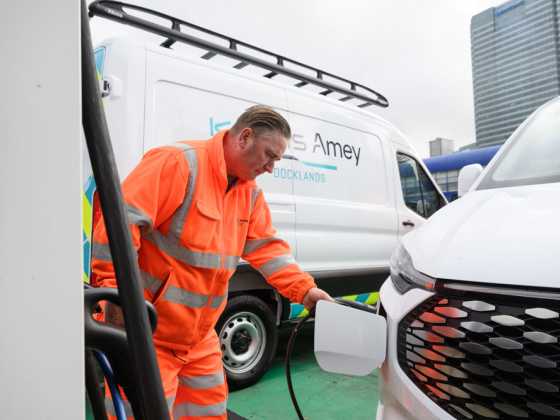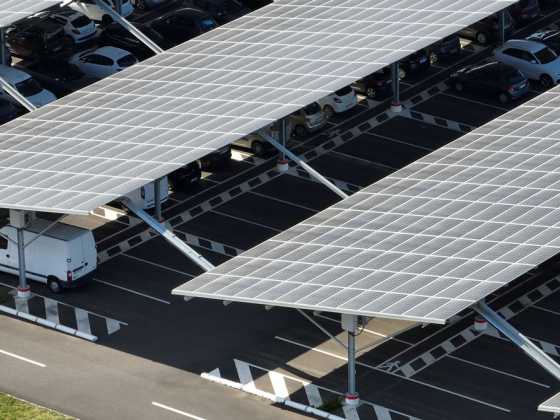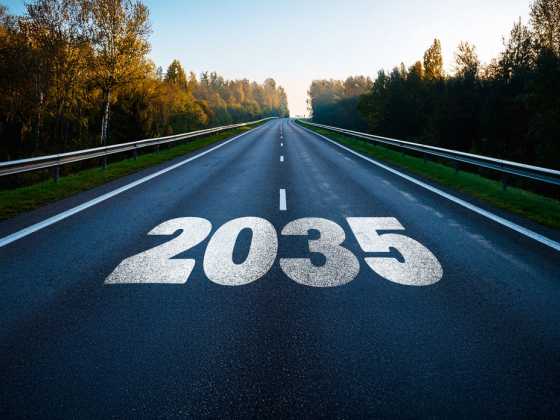Debating decarbonisation at GreenFleet’s Roundtable

When it comes to the decarbonisation of fleets, change is key. But change can pose significant barriers on the road to net zero. This was discussed at GreenFleet’s roundtable, which saw fleet managers and industry professionals gather at Anfield Stadium in Liverpool on 20th October
Change was the common theme in GreenFleet’s recent roundtable at the Anfield Stadium in Liverpool. Change is inevitable: we either change the way we live today and significantly reduce our carbon emissions, or we continue as we are until we have reached the point of irreversible climate change.
When it comes to the decarbonisation of fleets, change takes many forms such as culture change, behaviour change, operational change or organisational change, and each one poses a significant barrier in the road to net zero. Here in the North-West, we have seen plans for both the Manchester and Liverpool Clean Air Zone stalled or delayed as residents opposed change.
During our roundtable we explored how best to plan change, tools for tracking change, new mobility solutions as well as myth busting some of the barriers to change.
Net zero touches all parts of an organisation
For an organisation to achieve net zero; change must be far reaching and go well beyond switching company vehicles to zero emission. It is about creating a business wide net zero eco-system that covers transport, buildings, energy and even suppliers of goods and services.
Simon West-Oliver, sales and business development director at Assetworks observed that net zero solutions need to be holistic and include, for example, air source heat pumps, photovoltaics, renewable energy supply and energy storage. Ensuring these assets work together in harmony is an additional complication but is essential for a business to become truly net zero.
Merseyside Fire & Rescue has recognised this challenge and has created a net zero project team responsible for cross functional co-ordination that considers all power requirements including transport and buildings. Terry Giblin explained that the service must co-ordinate across five different boroughs with each borough having a different net zero target from 2032 to 2040.
Planning for change
Simon West-Oliver explained that despite the complexity, businesses starting the net zero journey all have the same questions; where to start? What does good look like? Where to go next?
When planning for change Assetworks helps clients to map the existing replacement cycle and identify where ULEV options exist today. The company also encourages a review of the traditional ownership route considering leasing, rental, subscription and possibly even retrofit.
And this approach is certainly working; Assetworks already has 14 million assets globally under their management, including Royal Mail, one of the UK largest fleets with just under 50,000 vehicles.
We also heard practical advice from Helen Acott from the Energy Saving Trust who support fleets transitioning to net zero. She advised: “Don’t worry about what you can’t do, focus on what can be done.” And make sure you have a plan for how and where these vehicles will be charged.
Rising energy costs
We have also seen significant change in the energy markets in the last 12 months, and the recent wave of energy price increases has placed a huge strain on operational budgets across most businesses, this was a cause for concern for our fleets.
Tony Johnson, development manager at Alderhay Children’s hospital reported that their annual energy bill has increased from £3m-£8m with no additional financial support. Inevitably this financial pressure will result in budget cuts elsewhere. The energy crisis, and the prospect of blackouts at peak time this winter, further highlights the importance of energy resilience and the benefits of local energy systems such as micro-generation and battery storage; although lack of capacity and the requirement for expensive electrical upgrades remain a significant barrier.
New mobility solutions
Public sector fleets, like the NHS, are seeking to reduce the use of private cars (due to lack of parking and to improve local air quality), however progress is slow as it requires a big behaviour change. Artisan Electric Scooters is offering a low cost, low emission alternative to the passenger car. With a 60 mile range on a single charge, and running costs of 2p per mile the electric scooter is great in urban traffic. They are also easy to park and can easily be recharged from a domestic socket.
Artisan Scooters saw sales shoot up during COVID when commuters were looking for reliable personal mobility solutions. New lifestyle services such as the on-demand grocery delivery service Getir have also played an important role in changing attitudes towards scooters.
Many forward-thinking fleets are also adopting electric scooters, Adam Bowen, business development manager at Artisan Scooters is working with delivery companies such as Just Eat, couriers, parking attendance services and even plumbers. Adam is on a mission to change attitudes and the culture towards scooters and motorcycles in the UK. He is keen to point out that electric scooters are not just toys for the weekend they are an important vehicle for urban businesses and commuters.
Myth busting
EV myths are also cited as barriers to change, with a variety of topics coming under scrutiny during the day. Battery life continues to be a cause for concern amongst our fleets; however Randall Smith was quick to point out that the evidence from auto OEMs shows a very healthy battery market, with new technology emerging such as sold state batteries, long warranties, solutions to replace cells and strong second hand values.
The discussion also touched on the growing market for second life car batteries (where old car batteries can be repurposed) with companies such as Connected Energy and EDF forming strategy partnerships with Nissan and Renault to support the use of these batteries for energy storage (grid scale, or local storage) or even as a low-carbon alternative to diesel powered generators.
The whole life carbon intensity of EVs (particularly the production of batteries) compared to ICE vehicles also raised concerns. However, Helen from EST noted that a number of reports have been produced on this topic such as The European Environment Agency (EEA) that disprove the myth that EVs have a higher carbon footprint that their ICE equivalent.
There is also an online Climate Wheels calculator from Otherway.co which has the capability to run climate analysis on every single road vehicle in the UK. Otherway.co doesn’t just look at the tailpipe: they look at how the vehicle is made, how it’s used and what happens at the end of its life compared to an internal combustion engine, with the ultimate aim of driving positive change.






